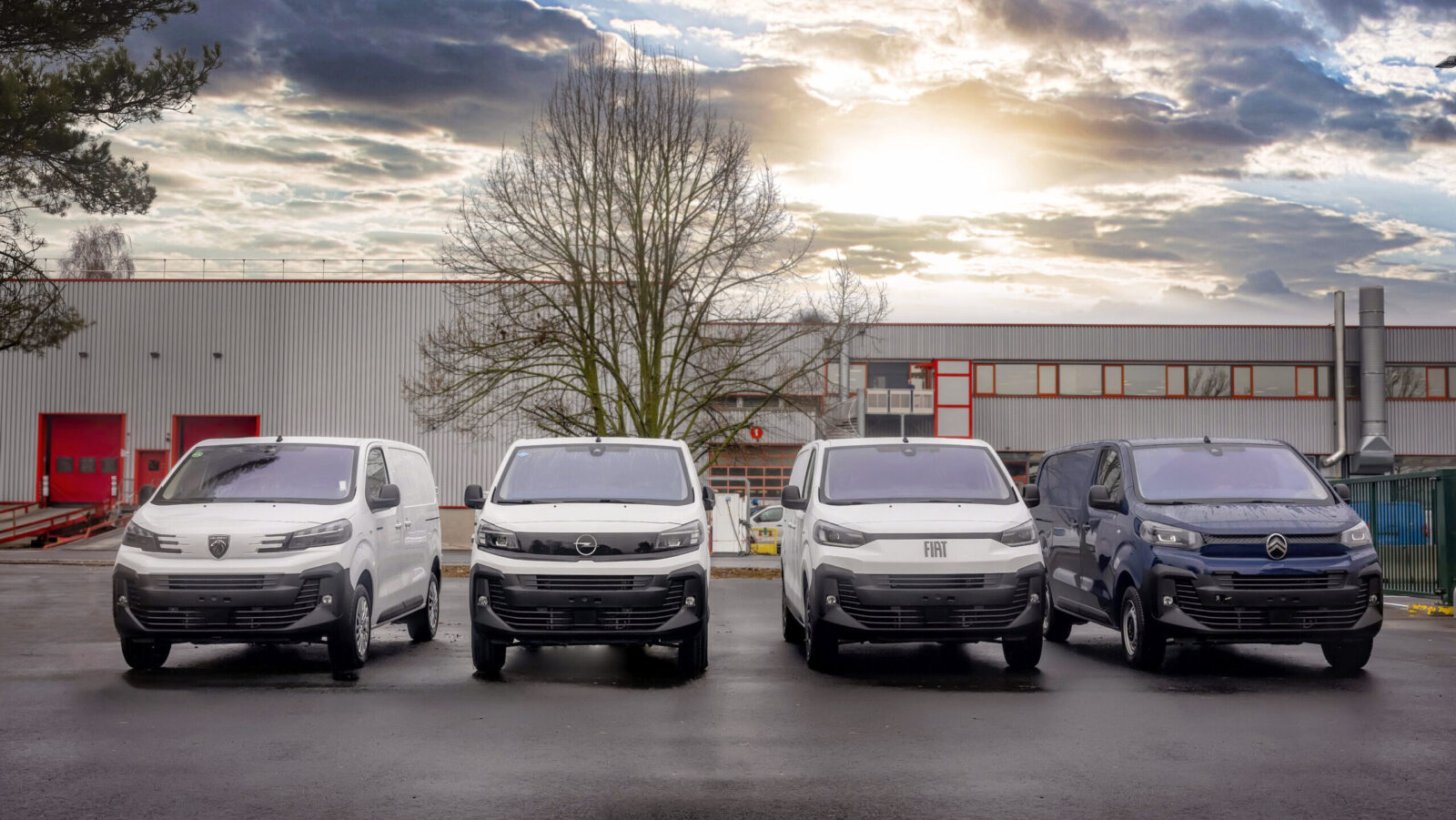Good morning.
In an interview with Bloomberg on Friday, Federal Reserve Governor Chris Wallace officially threw his hat in the ring as a possible replacement for current chairman Jerome Powell, saying, “If [the president] says, ‘Chris, I want you to do the job,’ I would say yes.”
Color us not-so-surprised, given that Wallace has been one of the board’s most vocal proponents of an immediate rate cut. That position, of course, puts him in opposition to Powell’s more patient approach and in line with the wishes of President Trump, who appointed Wallace in late 2020 and has mused about firing Powell (whom he also appointed) throughout his second term. To manage up, rates must come down.
National Housing Crisis Masks Severe Rental Shortages

Prospective homebuyers and sellers are locked in a holding pattern, as persistently high mortgage rates and elevated prices keep them from making a move.
The US housing market, usually a tailwind for economic growth, is in a rut and could “soon be a full-blown headwind,” said Mark Zandi, Moody’s Analytics chief economist. “I sent off a yellow flare on the housing market in a post a couple of weeks ago, but I now think a red flare is more appropriate,” he wrote on LinkedIn and X, formerly Twitter.
Homing In
Home sales, or lack thereof, have caught the attention of policymakers, but the shortage of affordable housing appears to be more urgent in the segment of the market that gets less attention: rentals.
Moody’s latest housing report highlighted pockets of severe rental shortages underlying nationwide estimates. “While there are certainly markets that struggle with an adequate supply of homes to purchase, particularly entry-level homes, the majority of shortfalls across the nation are in rental markets,” according to the authors of the report, who include Zandi:
- City-level analysis reveals more pronounced imbalances for specific income groups. There are “meaningful” shortfalls in rental homes in cities with populations of more than 1 million across groups, except for the high-income bracket. Income groups are based on census tract data and defined by average incomes relative to the median income.
- Aggregated data for Philadelphia’s rental supply doesn’t show a meaningful deficit, because shortfalls in lower-income areas are largely offset by oversupply in wealthier areas. Data show a similar dynamic in Raleigh, North Carolina. In St. Louis, Missouri, a huge undersupply in rentals is obscured by an oversupply of homes for sale.
The analysis understates the shortfall in some census tracts experiencing recent gentrification, because while new supply would appear to serve existing income groups living in the area, developers tend to tear down existing supply for low- or modest-income residents to build for high-income renters.
Under pressure: Policymakers, homebuilding chiefs and real estate leaders have criticized the Federal Reserve and Chair Jerome Powell for not doing enough to ease the housing crisis by cutting interest rates. That isn’t likely to inspire action anytime soon. “I find it appropriate to hold our policy rate at the current level for some time,” Federal Reserve Governor Adriana Kugler said in prepared remarks at the Housing Partnership Network Symposium in Washington, D.C., on Thursday. Tariffs are pushing up consumer prices, she explained. CME FedWatch puts the probability of a cut at less than 5% when the Federal Open Market Committee meets at the end of the month.
Your Data’s Out There. Take It Back.
An identity theft attempt happens every 22 seconds.
That’s because your personal details — like birthdates, home addresses and phone numbers — are easily found online.
With just a few more pieces of information (like your Social Security number), fraudsters can open credit cards or create fake accounts in your name.
Here’s the solution: Remove your personal data from the internet.
With the Incogni Unlimited plan, submit any link exposing your info — background-check sites, niche forums or even e-commerce platforms not covered in automatic removals — and we’ll handle the rest.
Think of Incogni as your one-stop shop for erasing your info from the web and right now, The Daily Upside readers get 55% off an annual plan with code THEDAILYUPSIDE.
After Stellantis’ Exit, Is Hydrogen Fuel Tech Imploding?

In the world of intermolecular forces, hydrogen atoms are well known for their ability to form strong bonds. But, in the world of cars, hydrogen fuels are unfortunately proving unreliable at bonding with drivers.
Stellantis — the multinational owner of over a dozen auto brands including Chrysler, Dodge, Fiat and Jeep — said last week that it plans to discontinue its program developing hydrogen fuel cell technology. As the company bluntly put it, the market currently has “no development prospect,” not unlike a pilot for a network talk show in 2025.
Against the Element
Stellantis’ decision to pull the plug, or more appropriately, disconnect the nozzle, came at the eleventh hour. A company statement said it had previously planned to begin serial production of its hydrogen-powered Pro One vans “this summer” in France and Poland; there are just 63 days left in the year’s warmest season. “The hydrogen market remains a niche segment, with no prospects of mid-term economic sustainability,” a company executive explained in the statement.
Stellantis identified three obstacles. First, “limited availability of hydrogen refueling infrastructure,” aka, do you even know any gas stations with hydrogen tanks in your neighborhood? Second, “high capital requirements,” namely that the electrolyzers needed to produce hydrogen fuel and the other infrastructure that must be built, are Almas caviar pricey. Third, “the need for stronger consumer purchasing incentives” because existing sales aren’t great: Take Toyota’s groundbreaking Mirai, the first commercially mass-produced hydrogen fuel cell vehicle, which sold a mere 499 units last year, down from 2,700 in 2023. Toyota has offered models for as low as $17,000, or 70% off, along with $15,000 in free fuel (sales are mostly confined to California since nowhere else has adequate infrastructure).
Between the Mirai and Hyundai’s Nexo and Honda’s CR-V e-FCEV, both of which are also low sellers, there aren’t many field cell models on offer, as the market has positioned battery electric vehicles at the forefront of the clean energy future. Stellantis, which is aggressively pursuing electrification as part of a plan to reach net-zero emissions by 2038, will now pursue another path instead, but not before navigating one awkward breakup:
- Stellantis placed a $6 billion bet on South America last year, which includes plans for cars with so-called flex-fuel engines that run on gasoline or ethanol. There are also plans to combine the flex-fuel combustion engine in hybrid setups that include a battery.
- But, as they move on with their new technologies of choice, execs will have to figure out what on earth to do with a one-third stake in fuel cell manufacturer Symbio, acquired in 2023. Tire-maker Michelin and auto parts manufacturer Forvia each own parts of the other two-thirds, and the former blasted Stellantis’ announcement that it was abandoning fuel cell technology, calling it “unexpected, brutal and uncoordinated.” (Forvia added that 80% of Symbio’s activity relates to Stellantis).
Goes a Long Way: Stellantis’ bailing comes on the heels of what, in theory, should be incredibly positive news for hydrogen cars. The International Council on Clean Transportation found earlier this month that vehicles powered by renewable hydrogen are the greenest of them all. They produce lower life-cycle emissions than even battery electric vehicles, the group found.
Bridgewater Associates Wants You To Predict The Future. The world is undergoing seismic changes with profound global impacts. But what will happen next? Bridgewater and Global Citizen are challenging bold thinkers to answer that question and potentially win $25,000 and employment at Bridgewater. If this excites you, apply now.
ChatGPT Crushing All Rivals in Chatbot Race

There’s a big reason that ChatGPT has become practically synonymous with the term “chatbot” itself. Or, more precisely, 900 million reasons.
That’s the number of times ChatGPT has been downloaded onto devices, according to new Sensor Tower data on chatbot downloads seen by Bloomberg last week. That makes OpenAI far and away the clubhouse leader in the category, outpacing its rivals by orders of magnitude. That’s a big, big problem for Microsoft, which once thought it owned said clubhouse.
On the Download
Google’s Gemini is the class runner-up, with just 200 million downloads so far. Meanwhile, DeepSeek has scored just 127 million downloads, dropping from No. 1 on Apple’s App Store after debuting earlier this year to disappearing from the Top 100 Free Apps rankings entirely; ChatGPT is currently in the top spot. Microsoft’s Copilot has seen a mere 79 million downloads, while start-up Perplexity has seen just 47 million.
And with 540 million monthly active users, per Sensor Tower, there’s reason to believe ChatGPT may just become the beneficiary of a winner-takes-(nearly)-all internet economy a la Google in search, YouTube in video, or Amazon in e-commerce.
Again, it’s a tough development for Microsoft, trapped in a protracted breakup with the startup it helped foster. Worse news? OpenAI last week debuted new tools that challenge Microsoft’s AI offerings even more directly:
- On Thursday, OpenAI announced new agentic features for ChatGPT, allowing it to navigate the web and interact with a user’s calendar and other applications. That makes it a little more of a direct rival to Microsoft’s Copilot, which, as its name suggests, has a more holistic presence on a user’s device than a regular chatbot.
- Most pertinently and likely concerning, for Microsoft, however, is that the ChatGPT agent can create slideshows and presentations compatible with Microsoft’s PowerPoint and Excel software.
Earth to Enterprise: The new features turn up the heat on Microsoft’s vast enterprise business, where it hoped to take an AI lead even as it fades on the consumer side of the equation. Still, it’s already in a knife fight with OpenAI over corporate clients. In one instance recently reported by Bloomberg, drugmaker Amgen pivoted from Microsoft’s enterprise AI tools to OpenAI’s, mainly at the behest of its 20,000 employees who found the latter more useful. Next up on OpenAI’s Big Tech menu? Possibly Google. According to a recent Reuters report, OpenAI is also preparing to launch an AI-powered browser in a direct challenge to Google’s Chrome business.
Extra Upside
- Weather Vanes: The insurance industry just closed out its costliest first half of a year since 2011, according to a recent Gallagher Re report.
- Streamlined: Netflix says it used generative AI for visual effects work in one of its TV series for the first time, claiming it allowed the production team of Argentine show “The Eternaut” to save time and cut costs.
- Dive Into The Possibilities For Your Retirement — and your portfolio — with help from Fisher Investments. Discover 13 ways you can make the most of a $1M+ portfolio in our guide.*
* Partner

